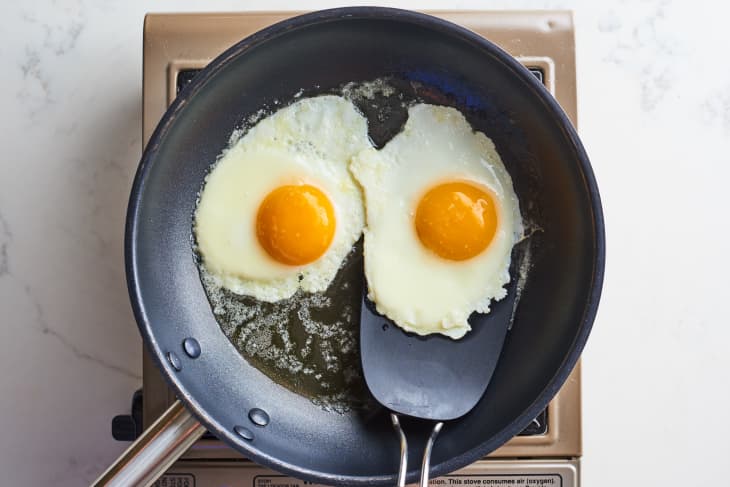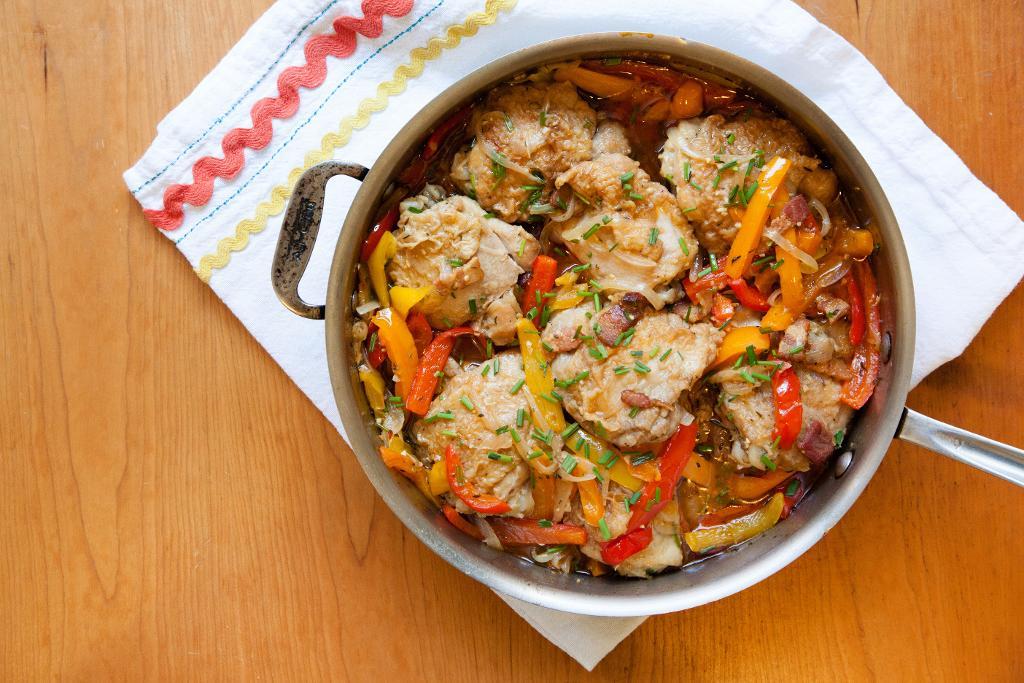Saute Pan vs Skillet: What’s the Difference?
-
 Maverick Charleston
Maverick Charleston
- Last update: September 20, 2021
Even if you are a fan of cooking shows, you may not know the difference between saute pans and skillets. After all, don’t they do the same thing? While no one is stopping you from cooking whatever you want in any pan you have, different cookware is optimized for different purposes.
Share and Purpose
Saute pans and skillets look different at a glance, and their different shapes are designed for different purposes.

Skillet Shape
A skillet will have a sloped edge and is your typical frying pan shape. It has the sloped edge for ease of stirring and transferring food from the pan to the plate. Think of how you slide a fried egg out of a skillet onto a plate, that is what it is shaped for.
Because of the sloped sides, you lose some cooking surface area. A 12 inch pan actually will only have about 10 inches of cooking surface. The sloped sides are also cooler than the base of the pan because they aren’t in direct contact with your cooktop.


Saute Pan Shape
The word “saute” is a French word that directly translates to “jump”. This cooking method simply refers to cooking in a pan and making the contents “jump” either by shaking the pan or stirring with a spatula or other utensil. It can also refer to the ingredients “jumping” in the oil as it sputters and cooks. So, technically you can saute food in any pan as long as you have a small amount of cooking fat and are tossing the ingredients in the pan.
Saute pans are specially suited for stirring because of its tall, straight sides, allowing you to stir more vigorously or with larger volumes of food in the pan. They typically come with a lid as well for steaming, since the shape can hold more liquid volume than a skillet. They’re also true to size: 12 inch diameter means 12 inches of cooking surface since none is lost to sloped sides.
Saute pans are extremely versatile, as their volume can accommodate lots of liquid for braising, poaching and stewing in addition to sauteing, roasting and frying. You can brown a roast on the stovetop and then add red wine and stock before braising it in the oven for hours, all without transferring to another cooking vessel. Make a pasta sauce, simmer it and then add the pasta directly to the saute pan and stir without spillage. If your saute pan has a helper handle, this is even safer as you can carry the pan with both hands.
If you are caramelizing or cooking cream sauces in your saute pan, make sure you use a whisk or spatula that can get into the corners where the base and sides meet as food can get missed when stirred and burn.
Best Materials for A Skillet
Skillets come in all kindsa of materials for different needs. Professional kitchens will typically choose to use a carbon steel or multiclad stainless steel for durability and even heat distribution. These can be rather expensive though good value: an All Clad or Made In clad pan will set you back $118-$200 but will last for decades.
Department stores carry a variety of home brand skillets such as nonstick T-fal, Cuisinart or even the cast iron icon Lodge. Nonstick is a perfect low maintenance option for home cooks, while a seasoned cast iron skillet is a favorite amongst campers and rustic cooks though they require some seasoning and care.
Aluminum nonstick and cast iron can be an inexpensive option if you are on a tight budget, and large brands such as T-fal are frequently on sale. You can get a 10inch skillet for $20-$50 depending on the brand and quality.
Best Materials for a Saute Pan
While you can find nonstick saute pans, it isn’t usually necessary. It is more common to use stainless steel as oil and liquid are usually necessary for sauteed dishes. To make the most of the large cooking surface, clad stainless or an impact bonded saute pan will give the best and most even heat distribution.
Saute pans are typically a bit more expensive than skillets because they come with a lid and have larger volume, i.e. more materials. A stainless clad saute pan will set you back $215-$300, but an anodized aluminum brand could be as low as $25.

Both saute pans and skillets can be used in the oven to finish off meats or braises under the broiler, so if you plan on using them for this purpose you should find a pan that is oven safe and doesn’t have a plastic handle.
Pros & Cons
Skillets
Pros:
- Versatile shape for sauteing, frying
- Sloped sides for easy pouring
- Can be found in many materials for many budgets
- Easy to shake and saute in one hand (unless using cast iron)
Cons:
- Cooking surface smaller than advertised size
- Lids typically cost extra
- Lower volume; can’t fill with as much liquid
Salute Pans
Pros:
- High sides mean large volume, good for liquids/sauces
- Large cooking surface
- Comes with lid
- Easy to carry if it has a helper handle
- Can be used as saucepan or skillet in addition to sauteing, poaching and braising
Cons:
- Food can burn in the “corners”
- Heavier than most skillets
- More expensive than skillets of same quality
If You Can Only Pick One…
We would recommend if you can only buy one piece of cookware, a saute pan is your best bet. It can fry and saute just like a skillet, but can poach, braise and stew, which is difficult in a skillet due to its shorter, sloped sides.
Invest in a quality stainless steel clad or impact bonded base to make the most of the large cooking surface. One that will last for years is the Made In 3.5 qt Saute Pan, which has five alternating layers of stainless with aluminum core. It is easy to clean by hand and requires minimal seasoning to stay sleek and release food. It will be a little heavy for tossing, so use a spatula or other utensil instead.
A suitable budget option is Cuisinart’s Power Bond impact bonded stainless saute pan, which will work on all cooktops and still has great heat distribution, though a lower oven tolerance than Made In.
Remember, find the right pan for your style of cooking, budget and stove. If you only need something to fry up some eggs, a mid range nonstick skillet like a Cuisinart or T-fal will suit you just fine and not break the bank.